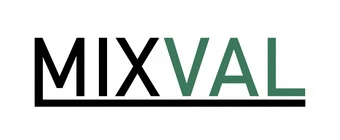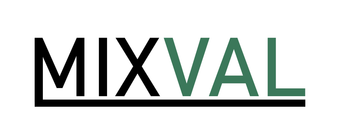It appears that your cart is currently empty
Counterfeit Detection Explained
What it Does, How it Does it, and Why it’s Important
We all know that electric money counting machines are convenient accessories that can drastically speed up the annoying process of counting large quantities of paper money by hand. They completely eliminate the hassle of having to manually count each bill, starting over again when you get distracted, and then having to repeat the process a third time to confirm that your first number was accurate. All of this being done while also drawing a line across each bill using your counterfeit detection pen and watching as maybe the ink changes; or maybe it doesn’t; or maybe it changes a little bit...what does that indicate?
But authenticating these bills with the naked eye is a thing of the past, as automatic cash counters can now also detect fraudulent bills. They have special scanners integrated into the manufacturing that are able to penetrate through the bills and determine if the fraud-protection measures embedded into money are met, all while continuing to perform at impressive speeds.
So even as technological advances to printing processes make it more and more challenging to identify counterfeit cash manually, the fact that money these days is equipped with various counterfeit protection measures means that you can perform multi-point validity checks with your money counter.
Depending on the currency, money these days may be equipped with:
- Security threads
- UV properties
- Watermarks
- Color-shifting inks
- Magnetic inks
- Microprinting
- A very specific/accurate bill dimension
- A linen/cotton blend paper embedded with colored fibers
-
Counterfeit bills may have one or several of these features, but it is incredibly difficult to perfectly replicate them all. Sure you can run your counterfeit detection pen over the bill and inspect the ink to see if it changes color enough to indicate a fake, or you can hold it up to the light to see some of the hidden watermarking, but only a machine can quickly and efficiently do a multi-point check for each bill to offer a sense of unmatched confidence and accuracy.
There are several ways to determine if a banknote is authentic. In this article, we will review each of these counterfeit detection methods so you can gain a better understanding of what’s out there and how an electric cash counter and counterfeit detector could benefit your business.
“UV” - Ultraviolet Light
Ultraviolet lights, referred to as “UV” detection, are held over the bill to show hidden features not visible under normal lighting. They will uncover security threads, ribbons, watermarks, and other hidden markings. All genuine US bills of at least five dollars in value feature a UV sensitive stripe running vertically.The location and color of this stripe varies by the denomination of the bill, but will be present on all.
UV is the most widely used form of counterfeit bill detection. Bills are made of a 75% cotton and 25% linen blend, and the US Federal Reserve adds a specialized ultraviolet ink with fluorescent phosphors that creates a hidden security measure that is not visible to the naked eye, except under a UV light source. If the various security measures printed into the bill glow under this light, then the banknote is generally considered to be authentic.
Ultraviolet ink is a difficult thing to replicate by counterfeiters, as it is easily corruptible and will be distinguishable as a fraudulent bill when handled by inexperienced counterfeiters.
“MG” - Magnetic Ink Verification
Magnetic ink is incorporated into portions of the bills, and will react under a magnetic ink verification scan. The MG scanning detects traces of iron particles in the ink characters printed on US banknotes. MG is typically used in conjunction with UV, rather than a stand-alone counterfeit protection measure.
MG is an ink that contains iron oxide that can be magnetized. Every bill that the US Federal Reserve prints has its own magnetic signature that can be read by counterfeit detectors, ATMs, and often even vending machines. If the magnetic properties in the ink are not detected when run through a capable machine, the counterfeit detector will flag it as a failed bill that is suspected of being counterfeit.
“IR” - Infrared Detection
Infrared security markings are invisible to the naked eye, and can only be seen when placed under a specialty infrared light source. You will know if a bill is authenticated in this way by determining if the security markings are present when placed under this light.
Currencies may be printed with Infrared inks that either reflect or absorb infrared light. They also weave a metallic thread into its bills, in specific sizes and locations, that are incredibly difficult to replicate. Money counting machines with infrared technology use sensors that detect the presence of both types of infrared inks, allowing them to identify whether or not the currency passed through the system is legitimate.
“CIS” - Contact Image Sensors
Contact image sensors are a scanner that is built into many bill counting machines and acts as a form of bill recognition. This feature enables the cash counter to recognize denominations by sort of “looking” at them as they pass through. This feature also allows for the scanning and recording of serial numbers on capable equipment.
“MT” and “MR” - Metal Thread Detector and Magneto-Resistive Sensor
These more unique counterfeit detection measures are used to check for specific metallic components through the bills. If the magnetized portions of the bill are not detected, they fail this test of authentication and may be fraudulent.
“Size & Thickness”
Ever since 1969, all circulated USD bills have been manufactured to the exact same specifications when it comes to size (or dimensions) and thickness. They are 2.61 inches high and 6.14 inches wide with a thickness of 0.0043 inches. When a money counting machine has this counterfeit detection feature, it can check each bill for precise length, width, and thickness to determine its efficacy.
How the MIXVAL Electric Bill Counters Detect Fraudulent Money
There is no shortage of electrical money counting machines on the market, but the bulk of them will often only offer one point of protection against counterfeit bills; usually a single CIS contact image sensor or a UV ultraviolet light scan.
The models MV1, MV2, and MV3 from MIVAL, however, offer a four-step process that can give you extra assurance that no counterfeits, even the best-executed ones, can make it into your cash flow. With this combination of technology, you can stop the processing of counterfeit bills before adding liability and risk. All three models offer a combination of counterfeit protection features, including:
- UV Ultraviolet Light
- MG Magnetic Ink Verification
- IR Infrared Detection
- CIS Contact Image Sensors
Many bars, restaurants, retail stores, gas stations, clubs, banks, and resorts handle a lot of cash on a daily basis, which makes them vulnerable to counterfeit bills. In fact, the US Secret Service actually stated that, at any given time, there is estimated to be about 200 million dollars of counterfeit money in circulation.
Owning a business has risks, so why take on one more potential loss with a sub-par cash counting system that has little or no counterfeit detection measures? Any business or organization that accepts cash is subject to potential losses due to counterfeit bills entering their bank. With a MIXVAL money counting machine, you can prevent these bills from ever entering your registers. They remain fast, without compromising on fraud protection, so all of your bases are covered.
Speed up the counting process, ensure fraud protection, and make your life easier with a MIXVAL cash counting machine today.
[Recommended: Graphic; 3 models side-by-side, image linked to category where products will be housed]


0 comments